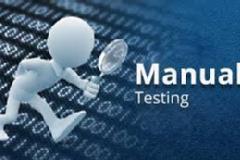oftware Testing is an important phase of the Software Development Life Cycle, Software Testing can be done in two ways, one is Manual Testing and another is Automated Testing or Test Automation.
Manual Testing is the process in which requirements are analyzed and understood, Test scenarios are derived, Test cases are documented, Test cases are executed, and the defects are identified, isolated, subjected for justification, and ensure that the product is defect-free, in order to produce a quality product.
However, it requires knowledge such as about different phases of the Software development life cycle, different types of Manual Testing, and different phases of the Software test life cycle.
SYLLABUS:
1) Software Testing Introduction
2) Software Development Life Cycle and various SDLC Models
3) Test Case Design Techniques
Static Techniques:
i) Informal Reviews
ii) Walkthroughs
iii) Technical Reviews
iv) Inspection
Dynamic Techniques:
a) Black-box Test Techniques
b) White-box Test Techniques
4) Levels and Types of Software Testing
Four Levels of Testing
i) Unit Testing
ii) Integration Testing
iii) System Testing
iv) Acceptance Testing
Types of Testing
i) Functional Testing
Unit Testing
Integration Testing
System Testing
User Acceptance Testing.
Sanity/Smoke Testing.
Re & Regression Testing.
ii) Non-Functional Testing
Performance Testing. (Load, Stress, Spike and Endurance Testing)
Usability Testing
Compatibility Testing
Adhoc Testing.
5) Software Testing Life Cycle
Software Test Documents
1. Test Policy
2. Test Strategy
3. Requirements Traceability Matrix
4. Test Plan
5. Test Case
6. Defect Report
7. Test Metrics
8. Test Summary Report
Software Testing Standards
1. ISO Software Testing Standards
2. IEEE Standard for Software Test Documentation
3. ANSI Standards for Software Testing.
Etc,
we are going to have a weekly assignments to evaluate the students progress.






